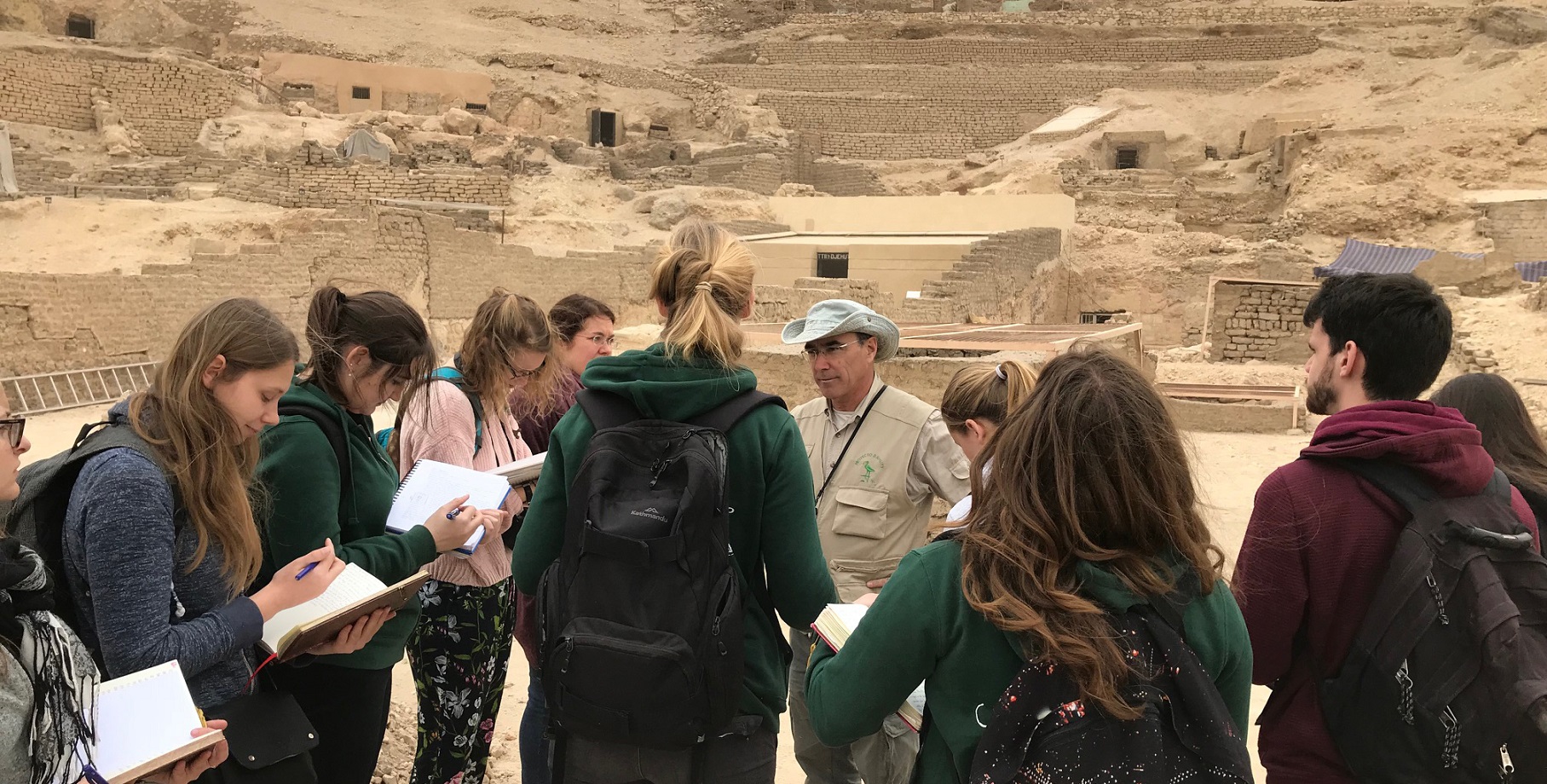Week 3: 20-27 January 2019
After our adventures in the Delta over the weekend, we returned to Cairo to have some time to work on our assignments before our next big trip. We were given several assignments in the beginning of the program, but due to our jam-packed schedule we never had any time to work on them so this week we well and truly made up for it.
The first assignment we all raced to finish was the museum assignment given out on our trip to the museum on the 8th of January. For this we all needed to use the database at the museum. Unfortunately, the curse of the pharaohs struck and the database was down for the entire week hampering our ability to find all the information necessary and forcing some students to not feel entirely happy with their results.
For the rest of the time we all visited the German Institute’s Library to access as much information as possible about the site presentations we need to give on our trip south. In preparation for this we needed to fully research our designated site as well as create a hand-out for the other students and have it printed by the time we left Cairo, as access to printers in Luxor is limited. This caused a lot of stress over the weekend as it was the anniversary of the 2011 revolution on Friday prompting us all to stay at home and ensuring a lot of printing places were closed for the weekend on Saturday. Eventually though we all managed to print our documents.
On Saturday after the race to find print shops we all met at the NVIC to get on a bus to the train station where we would catch an overnight sleeper train to Luxor. The cabins were a bit of a squeeze with all our luggage for the next two weeks but we happily paired off to let the rocking of the train rock us to sleep (although it was definitely not the most peaceful night any of us had ever experienced).

We were awoken at 5am on Sunday to the butler of our train cabin giving us breakfast and a one-hour warning before we reached Luxor Station. Arriving before the sun we made our way to the hotel where we were given two hours to rest and relax before our first adventure in Luxor. At 9am we made our way to the Spanish mission in Dra Abu el-Naga, led by José Manuel Galán, where the kings of the 17th dynasty were buried. We saw one of only two mortuary gardens ever excavated in front of a 12th dynasty tomb as well as the Spanish excavation efforts for two elite tombs from the 18th Dynasty, Hery who served under Ahmose I in the beginning of the dynasty, and Djehuty who served under Hatshepsut as “Overseer of the Treasury.” Their tombs were both incredible and interesting to see the development of these New Kingdom elite tombs as time went on with more elaborate decoration appearing through time.
After leaving Dra Abu el-Naga our we went down the road to see the tomb of Panehsy, an excavation run by the University of Memphis and led by Suzanne Onstine. This tomb belonged to a priest of the mortuary temple of Amenhotep I during the reign of Ramesses II showing that some royal cults were still operational a full dynasty after they were first established. The tomb was not only dedicated to Panehsy, but also to his wife who was a Chantress of Amun, an important position in its own right. In Antiquity the chambers were filled with 100+ additional burials and eventually the secondary chamber was set alight by tomb robbers creating an incredible challenge for bioarchaeologists to study exactly who these people were.

Continuing on after a quick lunch we moved to Deir el-Bahari and the magnificent mortuary temple of Queen Hatshepsut from the 18th dynasty who ruled Egypt in her own right for twenty years. She was the first New Kingdom pharaoh to build her mortuary temple in Deir el-Bahari and we were shown the famous Punt reliefs by Veerle as she presented her site presentation on the Queen’s expedition to the land of Punt. At the end of the day we went to the Tomb of Pabasa located at the end of the causeway of Hatshepsut’s temple. He was a high steward of the God’s Wife of Amun Nitocris during the 26th Dynasty.
When we were ready to leave, it was actually raining (!), but that was made up for when we had our first dinner in Luxor at the hotel restaurant and we each got our own fire place behind our chairs, warming us back up. All in all a very adventurous first day in Upper Egypt!
Anneke Stracke


